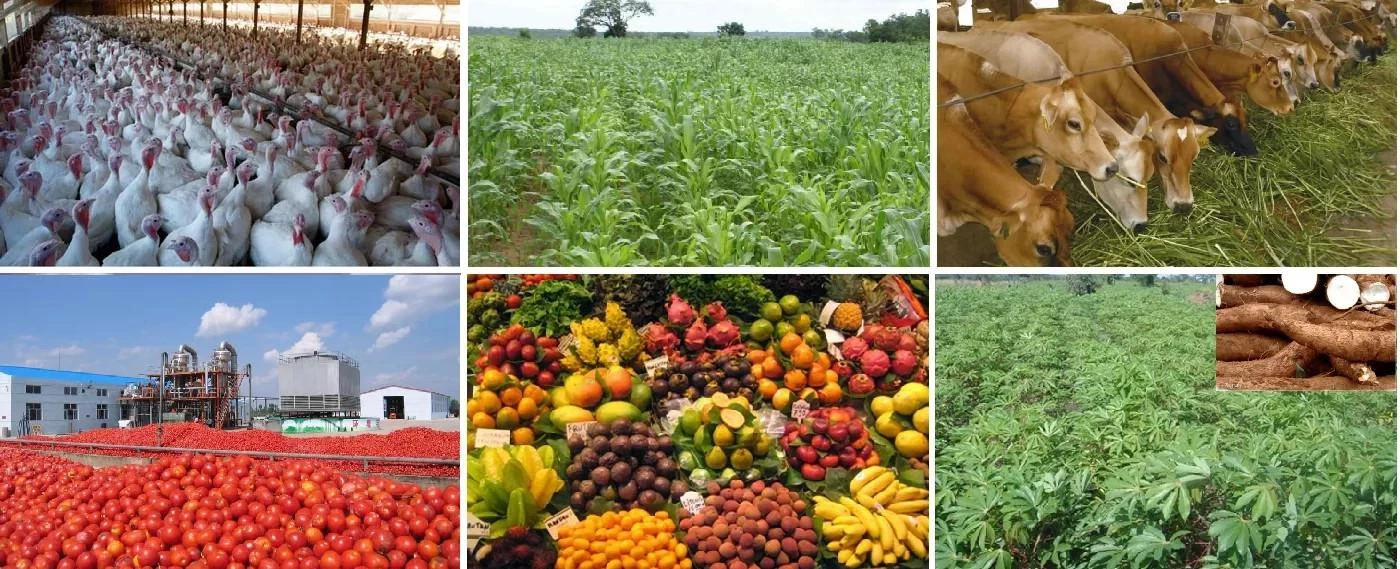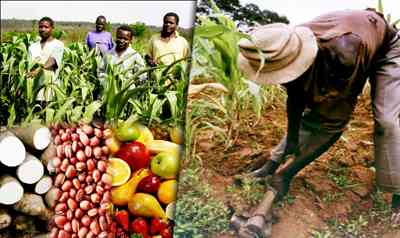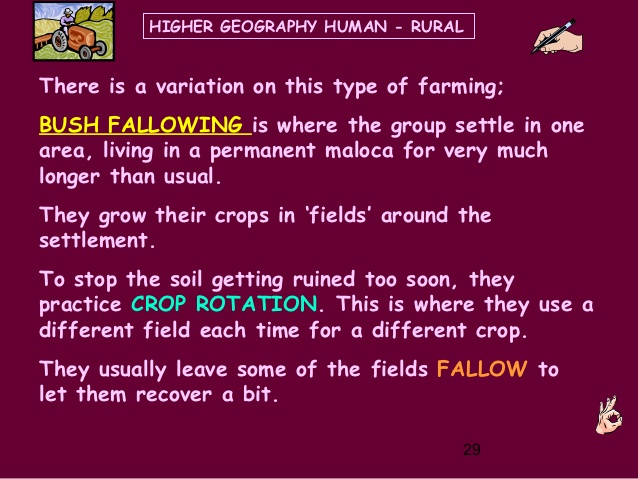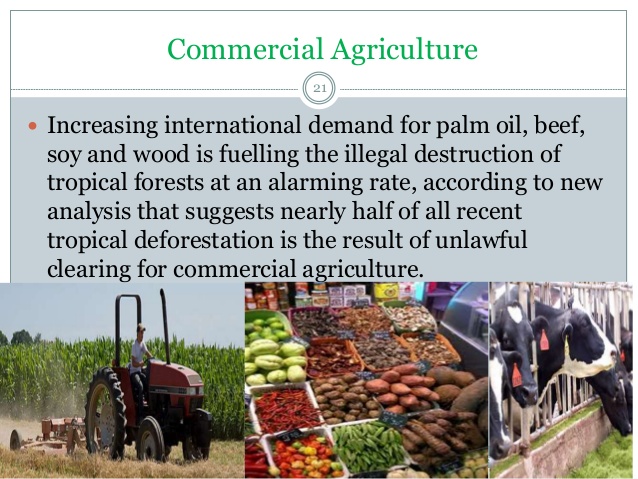TOPIC: DEVELOPMENT OF AGRICULTURE IN NIGERIA
STAGES OF AGRICULTURAL DEVELOPMENT IN NIGERIA

The stages of agricultural development in Nigeria should conveniently be divided into four.
• Subsistence /shifting cultivation stage
• Rotation bush/follow stage
• Crop rotation
• Commercial farming stage
SUBSISTENCE /SHIFTING CULTIVATION STAGE: After the stage of early man (hunting wild animals and gathering fruits, roots and vegetables) agriculture further progressed to stage of self sufficiency known as subsistence farming. Subsistence agriculture is therefore the first stage of agriculture. At this stage, farmers produce crops and animals to feed themselves and their families. In Nigeria, subsistence farmers are found mostly in villages. They may raise some goats, sheep, poultry and one or two cattle around their homestead. Production is not primarily for profit, but surplus may be sold for money. They use crude implements like hoe and matchet for farm work.
In subsistence farming, the cropping system used is called shifting cultivation.
Shifting cultivation is a system of farming in which the farmer, after farming on a piece of land for a few years abandons it for another piece of land without any intention of coming back to it. The system is common where there is abundant supply of land and low population density.

ROTATIONAL BUSH FALLOWING/LAND ROTATION/BUSH FALLOWING: In this system, a farmer cultivates a piece of land for some years. when its nutrient is exhausted, he leaves it for six to twelve years, to regain its fertility before it is used again. The resting period allows the land to enrich itself again through decayed leaves and plants parts. Under this system, farmers normally use a method of planting called mixed cropping. mixed cropping means planting more than one type of crops on a plot of land at the same time. The purpose of planting more than one crop on a plot of land is to secure against crops failure and to use fully the fertility of the soil.


CROP ROTATION: Increasing demand for land due to population exploision has made it impossible for land to be left uncultivated for a long time. Hence, the stage of crop rotation evolved.
Crop rotation is a planting sequence of growing different crops on a piece of land year after year. It is mostly practiced where land is scarce. Below is an illustration of crop rotation. The farm is divided to suit the rotation which depends on the number of crops to be planted. The crops should be arranged in such a way that an increase in the yield of crops of a season result in the yield of the next seasons crops. For example, a good leguminous crop will increase the nitrogen contents of the soil with the result that if the next crop is maize which requires nitrogen, it will do well. Some crops have roots that go deep into the soil, should be followed by shallow rooted crops. This allows nutrients in the soil to used well by different crops. Below is an illustration of crop rotation
PLOT 1 2 3 4
1st year Yam Cowpea Maize Groundnut
2nd year Cowpea Maize Groundnut Yam
3rd year Maize Groundnut Yam Cowpea
4th year Groundnut Yam Cowpea maize

COMMERCIAL AGRICULTURE: This is the type of agriculture where the farmer produces crops and animals in a large scale for profit making. In commercial agriculture, farmers adopt these planting methods
• Mono –cropping: This is the practice of planting one crop at a time on a plot and harvesting it before another crop is planted on the same plot.
• Mono –Culture/ continuous cropping: This is the practice of growing only one crop plant continuously on a piece of land. Eg palm plantation, citrus orchard, rubber.

EVALUATION
1. State the stage of development of agriculture in Nigeria
2. Explain the following terms
a. Subsistence agriculture
b. Shifting cultivation
3. What is land rotation?
4. State two reason why farmers practice land rotation
5. Explain the term crop rotation with a table
6. What is commercial agriculture?
ASSIGNMENT
1. State the stage of development of agriculture in Nigeria
2. Explain the following terms
a. Mono-cropping
b. Mono- culture
READING ASSIGNMENT
New Intensive Agricultural Science by E.U. Okoro pages 142-143
REFERENCE BOOKS
1.Junior Secondary Agriculture For Nigerian Schools By Anthony Youdeowei et al
2 .Intensive Agricultural science For JSS 1-3 By E.U.
Okaro
3 Essential Agricultural Science by O.A Iwena